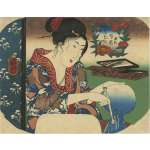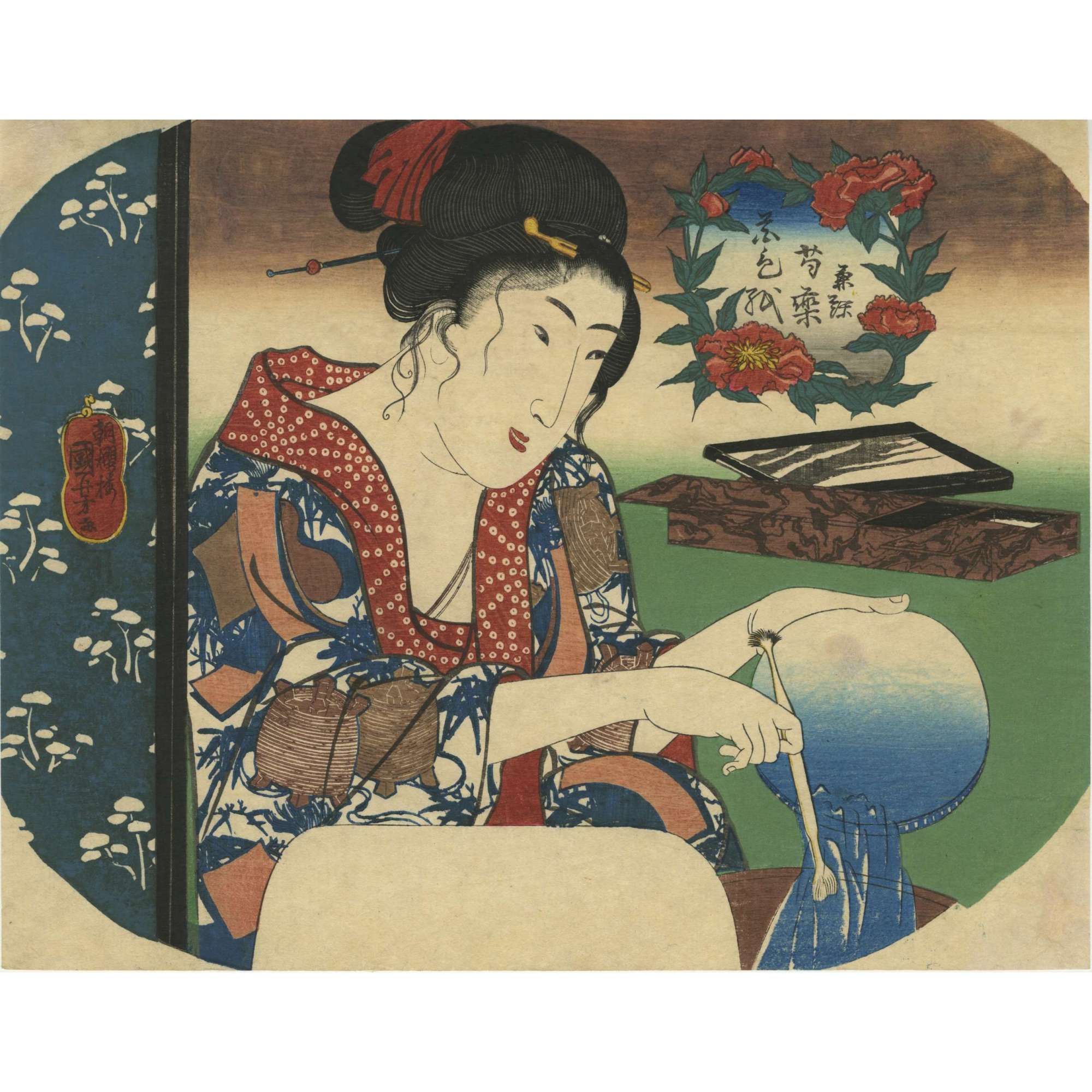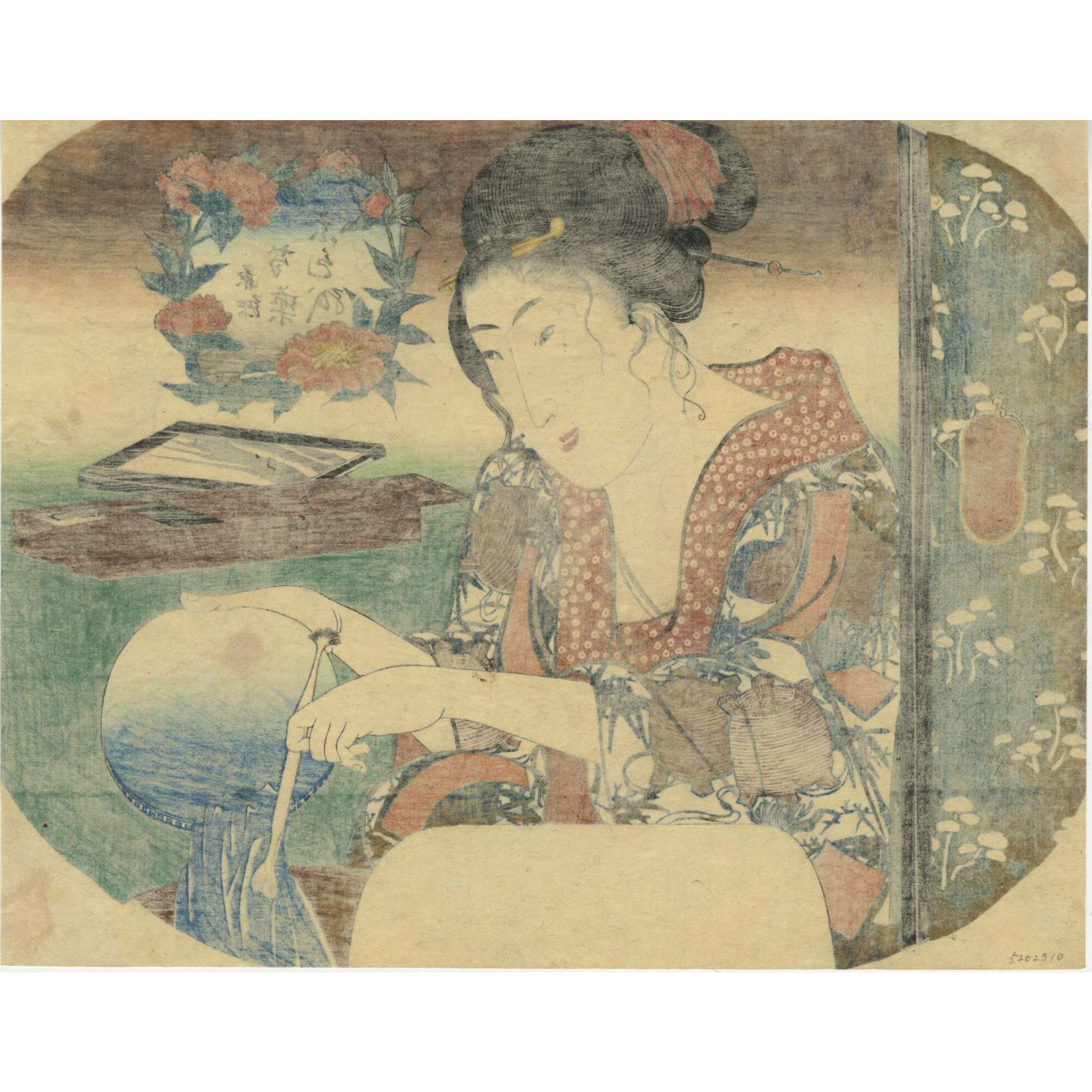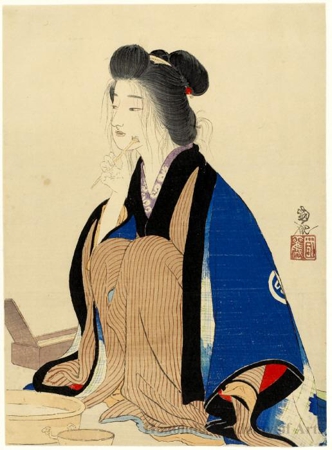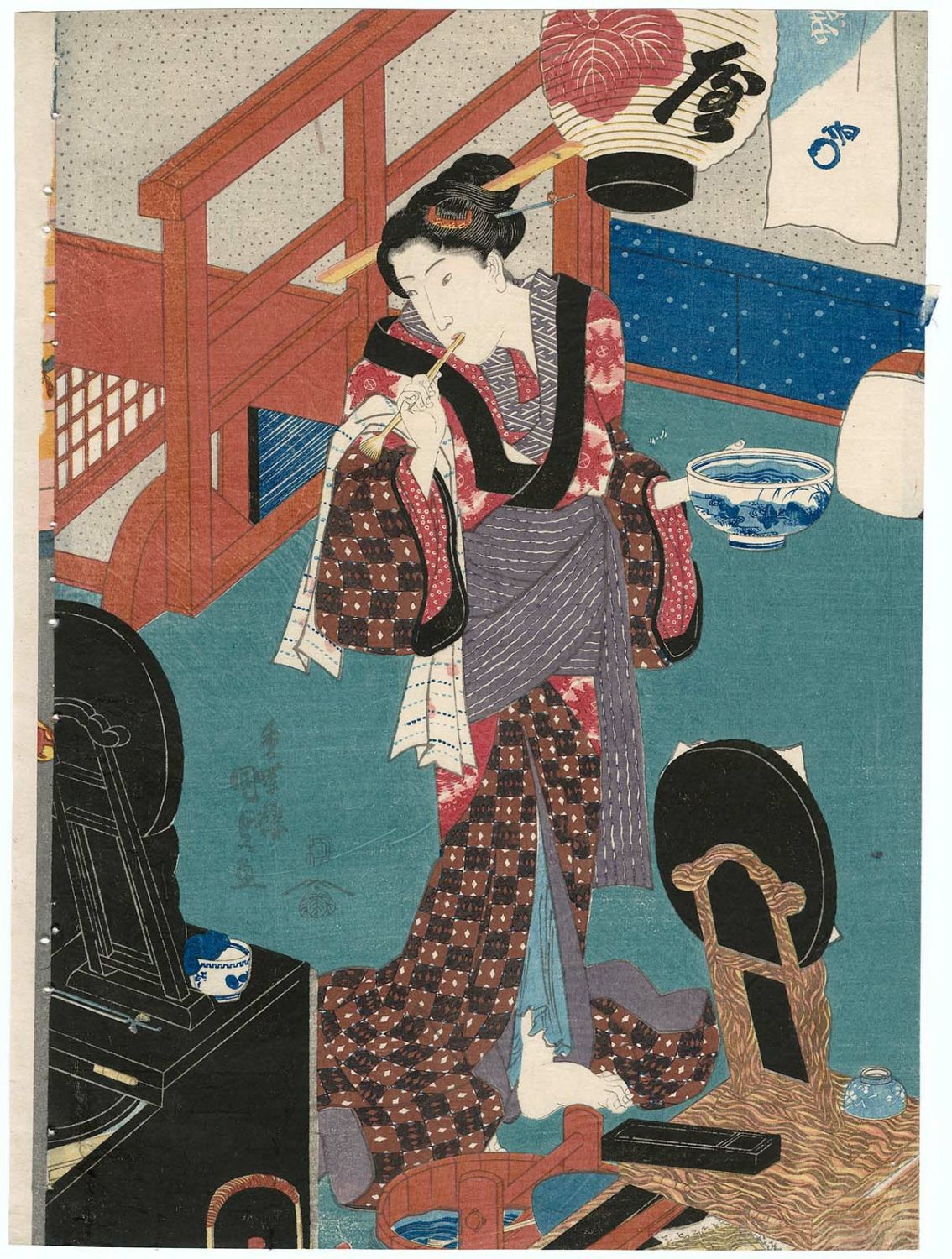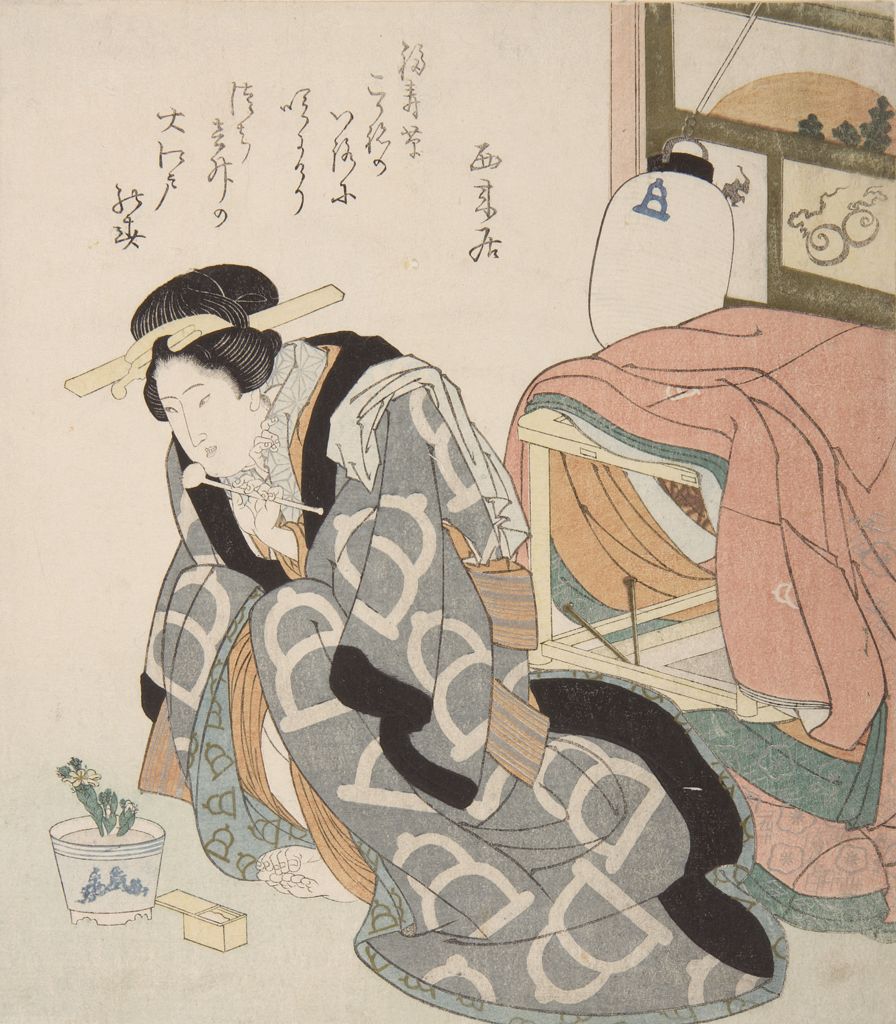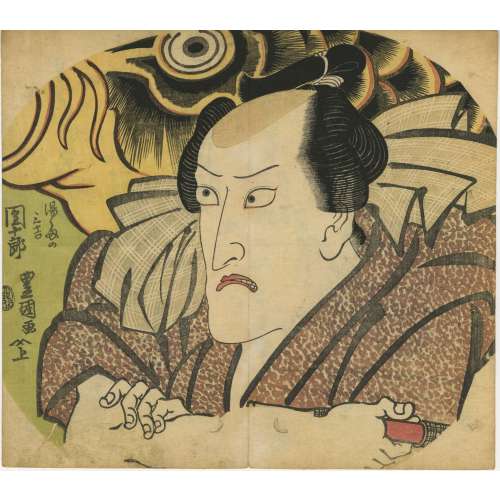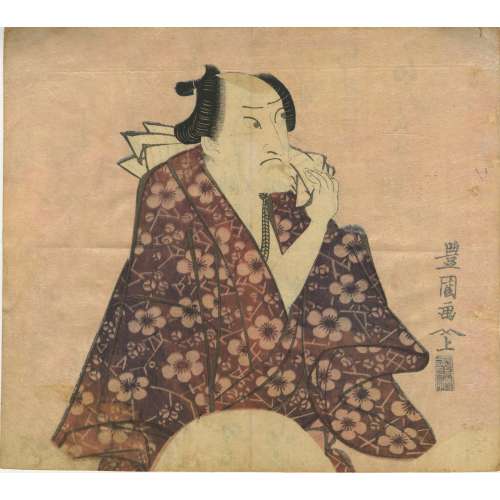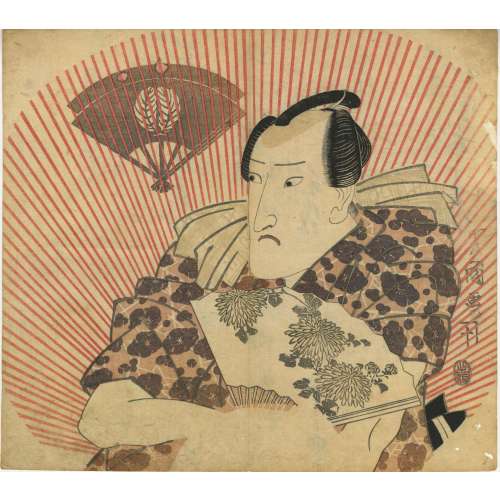Peonies (Shakuyaku) [芍薬]
Series: Flower-Colored Papers (Hana Shikishi) [花色紙]
Artist: Utagawa Kuniyoshi [歌川 國芳] (Japanese, 1798–1861)
Signature: Chō-ō-rō Kuniyoshi ga (朝櫻楼 國芳 画)
Publisher: Kojimaya Jūbei [小島屋 十兵衛] (Japanese, 1797 – 1869); seal 十, Marks 06-014 | 264a
Date/Censorship Approval: Nanushi seal Yoshimura (吉村) for Yoshimura Gentarō (吉村 源太郎), VI/1843–XI/1846.
Medium: Rigid fan print (Aiban Yoko-e Uchiwa-e, 合判横絵 団扇絵), 222 x 284 mm.
Interpretation of the Inscription in the Floral Cartouche
- 花色紙 (Hana Shikishi) – “Flower-Colored Paper” or “Decorative Shikishi Paper with Floral Motifs”
- 芍薬 (Shakuyaku) – “Peony”, a flower symbolizing prosperity, beauty, and romance in Japanese culture
- 団扇絵 (Uchiwa-e) – “Round Fan Illustration” or “Picture on an Uchiwa (rigid fan)”
Description & Symbolic Analysis
This print, part of the Hana Shikishi (Flower-Colored Papers) series, depicts a woman washing a basin after brushing her teeth. She is positioned behind an indigo-colored folding screen, adorned with a repeating pattern of distant pines, presented in reverse printing technique (wyabori, 捺ぼり). The screen is a visual separator, adding depth and an intimate atmosphere to the scene.
The woman is portrayed in a three-quarter view, facing left, her face delicately contoured. She is dressed in a safflower-dyed kimono (furisode, 振袖) featuring an asanoha (麻の葉, hemp leaf) shibori pattern, a motif often associated with purity and protection. Over this, she wears an outer garment decorated with an indigo bamboo motif, symbolizing strength and resilience. Additionally, the garment features:
- Double gourd (瓢箪, hyōtan) symbolises longevity, fertility, and good fortune.
- Strips of paper resembling “next-morning letters” (kinuginu no fumi, 衣衣の文) – These evoke romantic correspondence or the written wishes of the Tanabata festival.
- Spools or reels of thread (chikiri, 糸巻き) – A motif reminiscent of Tanabata festival themes, often linked to the celestial lovers Orihime and Hikoboshi. The phonetic pun with chigiri (契り, vow or romantic promise) reinforces themes of marriage, fate, and lifelong bonds.
This alludes to the famous poem from the Ogura Hyakunin Isshu:
契りきな かたみに袖を しぼりつつ
末の松山 波越さじとは
(Chigiriki na, katami ni sode o, shibori tsutsu, Sue no Matsuyama, nami koso sashi to wa)
“Did we not vow, through tears, our sleeves wet with grief,
that the waves would never break over the tip of Matsuyama?”
This poem by Minamoto no Toshiyori (c. 1055–1129) expresses a promise of eternal love, comparing it to the unshakable Matsuyama mountain, which remains firm despite the waves.
Adornment & Hairstyling
Her elaborate hairstyle features a red hair tie (musubi, 結び), signifying youth and romantic allure. It is further adorned with:
- Golden kogai (笄) – A decorative hairpin, often used by courtesans or high-ranking women.
- Tama kanzashi (玉簪) – A ball-tipped ornamental hairpin, reinforcing her refined status.
These elements suggest she could be either a courtesan (oiran, 花魁) or an upper-class woman.
Objects in the Scene & Their Symbolism
The woman is holding a traditional Japanese toothbrush (fusa-yōji, ふさ楊枝) in her right hand, while pouring out water from the basin after brushing her teeth. This act symbolizes purity and preparation for intimacy.
To her right, an ornate lacquered writing box (suzuribako, 硯箱) is placed near an inkstone (硯, suzuri). This object could also be interpreted as a dreamstone (梦石, mèng shí), a scholar’s object associated with nostalgia, love, or secret communication.
Context in Ukiyo-e Tradition
Tooth brushing was uncommon in bijin-ga (美人画, “beautiful woman prints”). Ukiyo-e frequently depicted women engaging in personal grooming rituals, reflecting ideals of elegance and self-care in Edo-period culture.
Two additional fan prints from the Hana Shikishi series have been identified and can be found at the Kuniyoshi Project website:
- Morning Glory (Asagao, 朝顔)
- Clematis (Tessen, 鉄線)
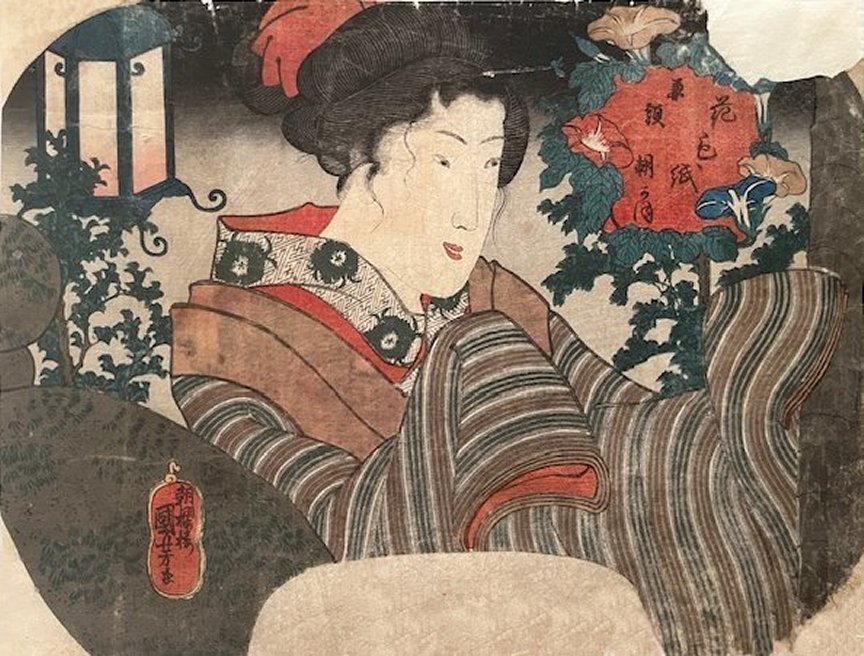 Morning Glory (Asagao, 朝顔) |
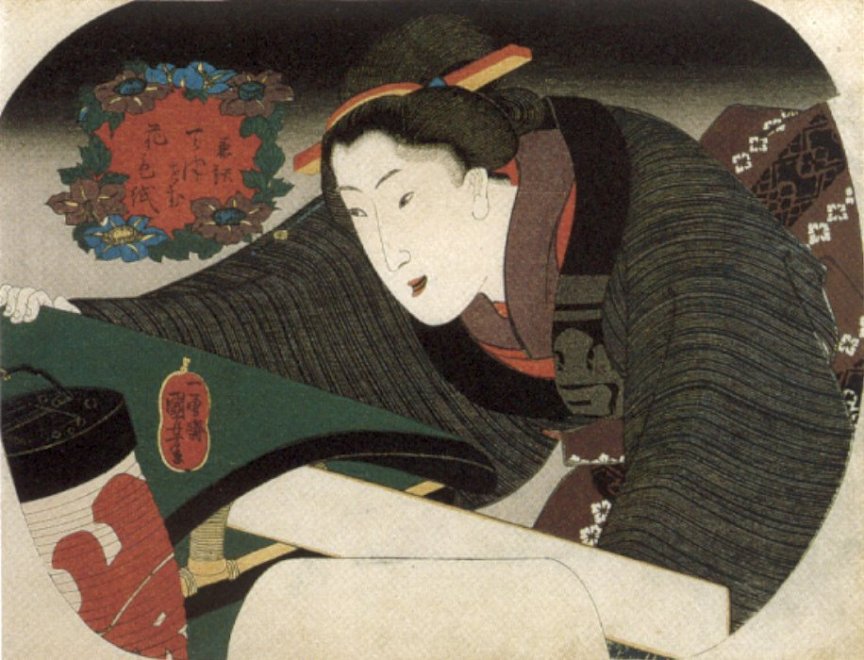 Clematis (Tessen, 鉄線) |
|---|
These prints, like Peonies (Shakuyaku), emphasize seasonal beauty and feminine refinement, themes central to Kuniyoshi’s bijin-ga oeuvre.


